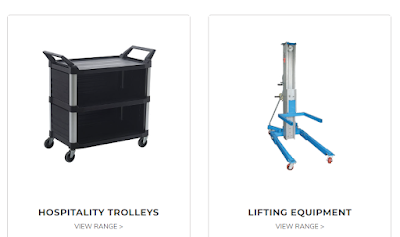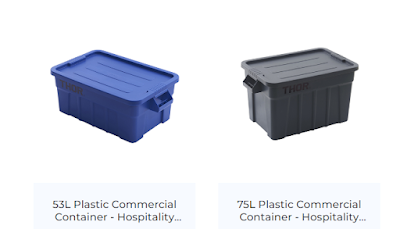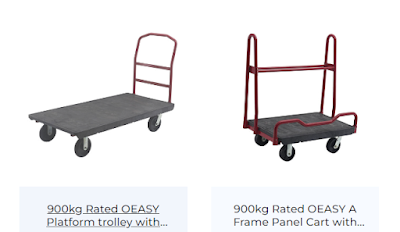Choosing the Right Forklift for Your Needs
Choosing the
right forklift is a critical decision that can significantly impact the
efficiency and productivity of your operations. With a plethora of options
available, navigating through lift capacities, fuel types, and attachments can
be overwhelming. This comprehensive guide aims to simplify the process by using
material handling from teamsystems.co.nz,
helping you make an informed decision that aligns with your specific needs.
Understanding
Lift Capacities
Lift capacity
is one of the most crucial factors to consider when selecting a forklift. It
refers to the maximum weight a forklift can safely lift and transport.
Forklifts come in various capacities, ranging from small electric models with a
3,000-pound capacity to heavy-duty diesel-powered machines capable of lifting
50,000 pounds or more.
To determine
the right lift capacity for your needs, evaluate the heaviest load you
anticipate lifting regularly. It's crucial to account for the weight of the
load as well as any potential future requirements. Selecting a forklift with
excess capacity ensures you have room for growth and prevents overloading,
enhancing safety and efficiency.
Choosing the
Right Fuel Type
Forklifts are
available in different fuel options, each with its advantages and
considerations. The common fuel types include electric, propane, diesel, and
gasoline. Understanding the characteristics of each can help you make an
informed decision.
Electric
Forklifts: These are ideal for indoor use due to their zero emissions and quiet
operation. Electric forklifts are rechargeable, providing a clean and
cost-effective solution. However, they may have limited run time and require
charging infrastructure.
Propane
Forklifts: Propane forklifts are versatile and suitable for both indoor and
outdoor applications. They offer longer run times compared to electric models
and are quick to refuel. Propane is a clean-burning fuel, making it
environmentally friendly.
Diesel
Forklifts: Designed for heavy-duty applications, diesel forklifts are robust
and provide high lift capacities. They are suitable for outdoor use but emit
exhaust fumes, making them less ideal for indoor environments. Diesel forklifts
require regular maintenance and fueling.
Gasoline
Forklifts: Gasoline forklifts are similar to propane models but run on
gasoline. They are suitable for a variety of applications but are less common
due to their higher emissions and fuel costs.
Consider your
operational environment, budget, and specific requirements when choosing the
fuel type for your forklift. Factor in fuel availability, maintenance costs,
and emissions regulations to make an informed decision.
The
Importance of Attachments
Forklift
attachments play a crucial role in expanding the capabilities of your equipment.
Different attachments are designed for specific tasks, allowing you to
customize your forklift to meet diverse material handling needs. Some common
attachments include:
· Forks: Standard forks are suitable for lifting
pallets, while specialized forks can handle unique loads such as drums, coils,
or bales.
· Clamps: Clamps are ideal for handling irregularly
shaped loads like barrels, paper rolls, or textile bales.
· Sideshifters: Sideshifters allow operators to move
the forks laterally, providing better positioning and accuracy when placing
loads.
· Rotators: Rotators enable the forklift to rotate the
load, making it easier to handle materials like bins, pallets, or containers.
· Curtain and Roll Clamps: Designed for the textile
industry, these attachments efficiently handle rolls of fabric or other
materials.
Before
selecting attachments, carefully assess your material handling needs and the
types of loads you'll be handling regularly. Investing in the right attachments
enhances the versatility of your forklift and improves overall efficiency.
Conclusion
Choosing the
right forklift involves a thorough assessment of lift capacities, fuel types,
and attachments. By understanding your operational requirements and considering
factors such as load weights, indoor or outdoor use, and specific handling
needs, you can make an informed decision that aligns with your business goals.
Regular maintenance, proper operator training, and adherence to safety guidelines
are also crucial for ensuring the longevity and reliability of your chosen
forklift. Remember, a well-chosen forklift is not just a piece of equipment; it's a strategic investment
that can propel your material handling operations to new heights.




Comments
Post a Comment